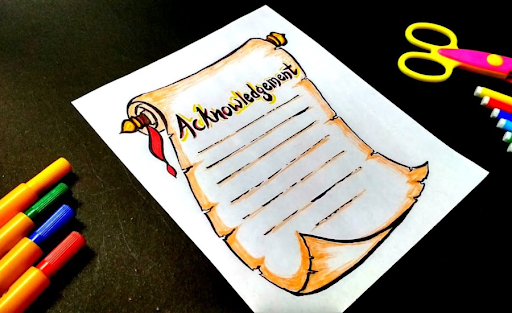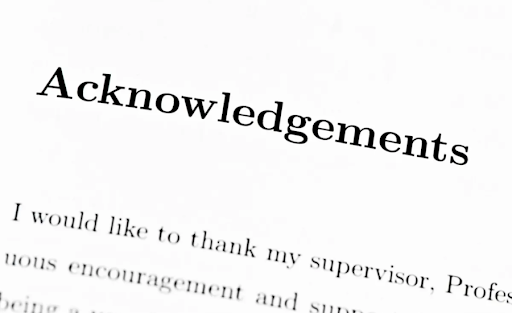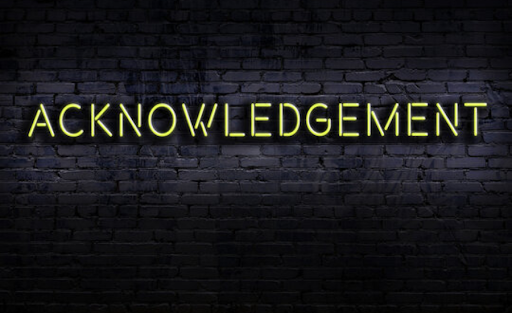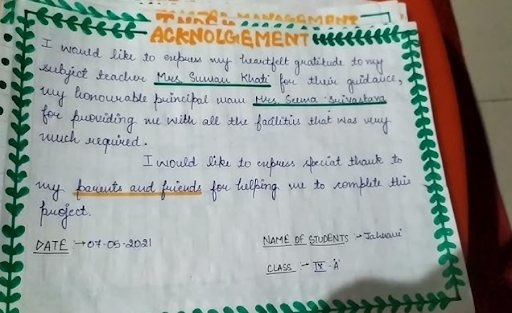Top 10 Creative Acknowledgement Ideas for School Projects
Acknowledgements are more than just a formality in school projects. They offer students a chance to express appreciation and recognize the contributions of individuals who helped them along the way. While traditional acknowledgements often follow a simple formula, today’s learners are seeking ways to make their expressions more personal, creative, and meaningful. A well-written acknowledgement not only adds depth to a project but also showcases sincerity and maturity in communication.
In this article, we explore ten creative acknowledgement ideas that can be used in school projects across subjects. Whether it’s a science fair presentation, a group assignment, a research paper, or an art display, these ideas will help students stand out while still showing genuine gratitude.
1. Story-Based Acknowledgement
Instead of listing names, begin your acknowledgement with a short narrative about the journey of your project. Talk about the challenges faced, turning points during the process, and how each individual played a role at different stages. This storytelling format creates an engaging and heartfelt introduction to your work.
This project began with uncertainty and a blank notebook. But with encouragement from my teacher, late-night brainstorming with friends, and my family’s constant support, the pages started to fill. Each person involved became a chapter in this journey.
2. Themed Acknowledgement Using Project Topic
Tie your acknowledgements to the theme or subject of your project. If your project is about space, for instance, you can structure your thanks as a “mission log.” If it’s about literature, frame it like the closing of a novel.
Example for a history project:
As I explored the timelines of great events, I also reflected on my own. I thank my teacher for guiding me like a historian, my classmates who joined me in debates like scholars, and my parents who stood behind me like a strong foundation in any revolution.
3. Poetic Acknowledgement
Use poetry or verse to convey your appreciation. A few lines of rhymed or free verse can leave a lasting impression and show extra effort and creativity.
4. Metaphor-Based Acknowledgement
Craft your acknowledgement using a central metaphor, such as a journey, a recipe, a garden, or a puzzle. This allows you to weave in your gratitude creatively.
Example:
This project was like baking a cake. My teacher was the recipe, guiding every step. My classmates were the ingredients, each bringing their unique flavor. And my parents were the oven, providing warmth and support throughout.
5. Visual or Illustrated Acknowledgement
If the format allows, include a visual representation like a thank-you tree, gratitude wheel, or hand-drawn portraits of contributors. This is especially effective for art or design projects.
Idea:
Draw a tree with names of individuals on each branch or leaf, showing how each person supported your growth.
6. Alphabetical Acknowledgement
Structure your acknowledgement using the alphabet, assigning each letter to a word or name that reflects someone’s contribution. It’s a fun and thoughtful way to include everyone meaningfully.
7. Timeline or Milestone Format
Create a timeline of your project’s development and attach acknowledgements to each stage. This method not only shows gratitude but also reflects the effort and planning behind your work.
Example:
Week 1: Research began — thanks to my librarian for helping me gather sources
Week 2: Drafting ideas — thanks to my teacher for brainstorming with me
Week 3: First submission — gratitude to my parents for proofreading
8. Dialogue-Style Acknowledgement
Format your acknowledgement as a conversation, either imagined or real. This can reflect genuine moments shared with contributors and add personality to your work.
Example:
Friend: Are you sure this idea will work
Me: I’m not sure, but thanks for staying up late and figuring it out with me
Teacher: Don’t give up after the first draft
Me: Thank you for your patience and for pushing me to improve
9. Backstage Pass Acknowledgement
Compare your project to a performance or a production. List the people behind the scenes who made it possible, just like credits in a film or play.
Example:
Director: My teacher, for guiding the process
Writers: My friends, for brainstorming and editing
Support Crew: My family, for meals, patience, and time
10. Gratitude Map
Use a map or network model to represent people who helped you at various touchpoints. Describe how each connection influenced a different part of your work.
Idea:
Draw or describe a map with locations like Library Lane, Support Street, and Brainstorm Bay. Assign each location to someone who helped, showing how your journey crossed paths with theirs.
Final Tips for Writing a Strong Acknowledgement
While creativity is encouraged, sincerity should remain at the heart of every acknowledgement. Here are a few important reminders:
- Be specific: Mention exactly what each person helped you with
- Be concise: Avoid overly long praise; keep it respectful and balanced
- Be inclusive: Don’t forget anyone who played a meaningful role
- Be appropriate: Match the tone with the nature of your project and audience
Conclusion
Acknowledgements are more than just a required section—they’re an opportunity to express appreciation in your unique voice. Whether you prefer humor, poetry, stories, or visuals, your thank-you message should reflect your journey and the people who helped shape it. By choosing one of these creative acknowledgement ideas, you not only make your project stand out but also honor those who supported you in a memorable and thoughtful way.
In the end, it’s not about using fancy words—it’s about genuine gratitude. And when that comes across clearly, any acknowledgement becomes meaningful.





